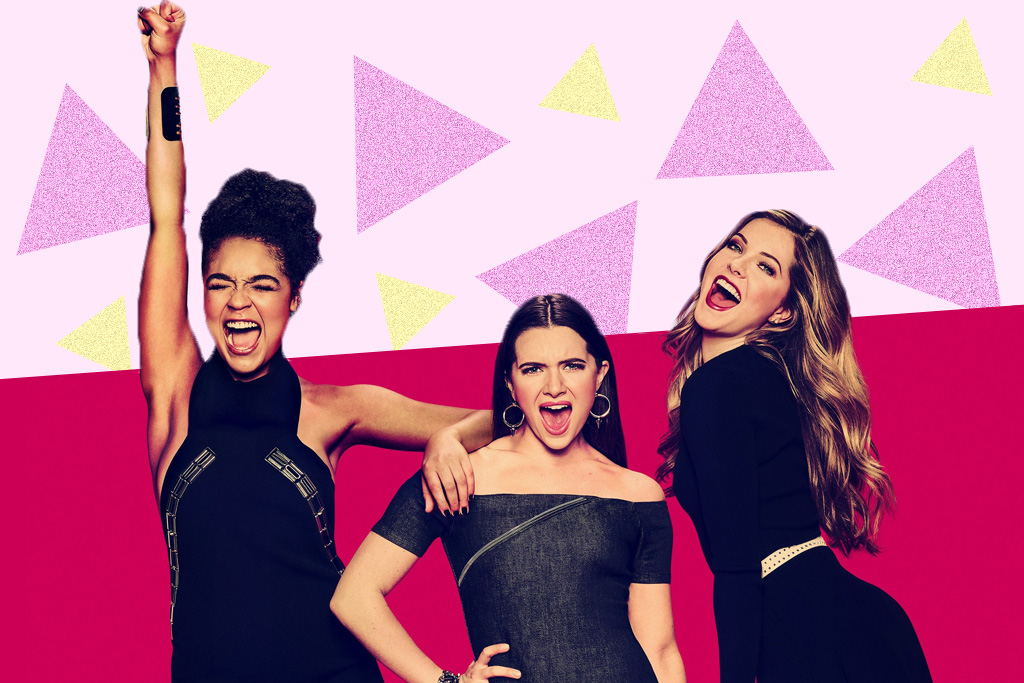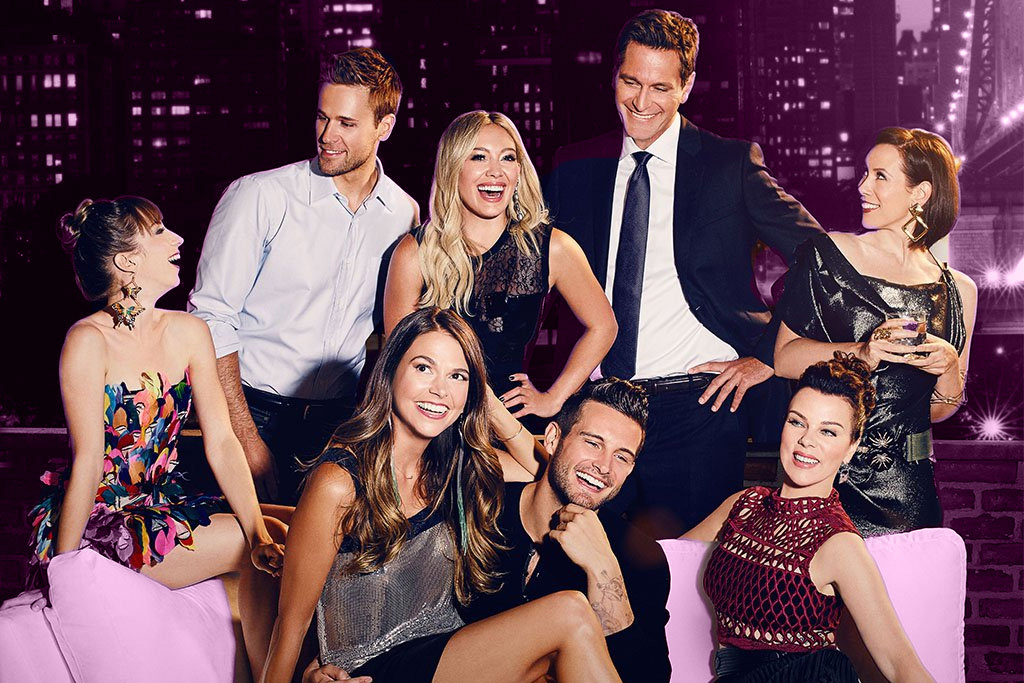‘The Bold Type’ Is A Vaguely Depressing Fairy-Tale For Millennial Workaholics
Scarlet Magazine is an impossible dream for a generation of people who love to work.

There is no better show on TV at the moment than The Bold Type.
A show about three young well-dressed women working in a vaguely woke fashion magazine in New York City — shunt it directly into my bloodstream by a catheter in my butt!
It’s so full of dumb-yet-perfect chaos energy, with stories that range from the painful staff writer, Jane, trying to fix her vagina with a jade egg — to surprisingly nuanced conversations about MeToo, and insanely weird gun control plotlines. Cool!
It simply wouldn’t work if the main characters weren’t brilliantly realised by the actors, and the show didn’t lean into absurdity as equally as wokeness. It’s a real trip.
But, as much as all this is enough to carry most shows, even crackling with as much stupid electricity as The Bold Type, I’ve realised that what truly enthrals me, like a cartoon snake with whirling hypnotic eyes, is Scarlet Magazine itself. The insane, ridiculous, otherworldly romanticisation of the perfect workplace, that somehow hearkens back to both another time, and no time at all.
I really hope real-life magazines and other forms of media take note. Scarlet is the fictional magazine we deserve irl.
— Tori Conley (@torino1389) June 12, 2019
As Aisha Dee, who plays Kat says in this Vulture interview:
“This show is always this weird kind of blended mix of the real world and this fantasy world where you wear $30,000 worth of clothes every day.”
Working for Scarlet is a weird capitalist fantasy, a high-fashion dream where every day working, every story filed, every shoot successfully shot — even if frustrating, or confusing, or inappropriately workplace sexual — elevates you in some way.
But what is it about a day job that manages to be fascinating television, in this, the year of our lord, 2019? And is it slightly sad that an entire generation has a giant hard-on for something as pedestrian as ‘full time work’?
Okay but WHY do I like The Bold Type so much when it is so bad
— Amanda Mull (@amandamull) June 16, 2019
Workin’ 9-5, What A Way To Make A Living
A lot has been written about the challenges millennials face in the workplace.
This excellent and viral BuzzFeed article summarises it adeptly, calling us “the burnout generation”.
“Why am I burned out? Because I’ve internalised the idea that I should be working all the time. Why have I internalised that idea? Because everything and everyone in my life has reinforced it — explicitly and implicitly — since I was young. ”
Things are not easy — financially we make far less than our parents did at our age, and we have less savings, less equity, almost no job stability and the ever-dragging weight of student debt.
Heck, that’s if millennials are even getting paid — unpaid internships and unscrupulous companies consistently trying to rip off young employees have become upsettingly standard.
This, obviously, has many consequences — one of the most widespread being a weird, anxious fetishisation of working. We’ve become a generation who work all the time, or talk about working all the time, performatively signalling our commitment to the grind.
We’ve become the hustle generation, workaholics, who manage to somehow value the idea of “doing what you love” at the same time as knowing that’s harder than ever before.
the only misstep the bold type made this whole season was having sutton make her debut collection entirely centered around drab paisley
— rachel syme (@rachsyme) June 12, 2019
“Here’s A Fabulous Pair Of Jeans — Now Go Climb A Mountain,”
So — enter Scarlet Magazine, a beautiful, hazy, rose-tinted, utopian ideal of a workplace.
Scarlet exemplifies hustle culture — each of our main protagonists work hard (or, so we’re told, Jane writes literally one story a month), and there’s admittedly plenty of obstacles to their success placed by the narrative. Along with the romance and friendship dramas, there’s always a workplace complication to overcome, solve, or learn from.
From Jane’s never-ending quest to find the perfect clicky-yet-ethical feature story, to the aggressive “the dot com” muscling in on the print issue, to accidentally almost killing a major sponsor, the show puts forward the idea that these characters work, and strive — this is no The Office style slackers.
In fact, the jobs that these characters love are shown to be inherently unstable, preciously won and potentially easily lost.
just wanted to say tonight's Bold Type finale is utterly deranged in how divorced it is from how magazine publishing really works, and made me yell at my screen for half the episode. in other words, I loved it
— Kevin O'Keeffe (@kevinpokeeffe) June 12, 2019
It makes the characters value their jobs even more, especially when by season 3, the most precious position of all is at the very top of the pyramid, as managing editor Jacqueline Carlyle fights to show her worth to a conservative board.
Probably the most realistic part of the entire show is representation of instability in the media, and the way employers weaponise that — when you feel “lucky” or “grateful” to even have a job, it makes it harder to fight for your rights in the workplace. It also benefits media companies to have their workplaces glamourised.
Scarlet is not a utopia because it’s easy, or simple — in fact, that would be actually antithetical to hustle culture. It’s not a worthy use of time if it’s not a grind. It’s not romantic if you don’t have to fight to even work there.
Rather, the millennial dream that Scarlet fulfils is the idea that everyone is rewarded for hustling — in every way. In insane ways: practically, financially, spiritually, socially.
the only accurate media thing on the bold type is that the social media editor is almost always the smartest and most capable person the in room
— rawiya kameir (@rawiya) June 12, 2019
Do What You Love, And Die Doing It
TV sitcoms by necessity often become microcosms, tiny insular universes that shrink into themselves until you could be forgiven for thinking the only people in the world are 4-6 beloved characters.
By the end of Friends, you had to wonder if they knew literally any other people, if they ever left that apartment or that coffee shop, if they were stuck in a depressing Sisyphean loop, punctuated only by Ross’s out-of-town weddings.
The Bold Type already works comfortably within this idea — it’s set in a workplace, so it’s not weird that it mostly takes place there. It’s about a workplace. *Deeply early 2000s cultural criticism voice* The fourth character in The Bold Type is the magazine itself!
Having your best friends also work in that place is probably the hinge that the show rotates on, however. That’s a cute concept! What a fun idea.
How dangerously idealistic — most workplaces are populated by semi-hostile strangers who would probably kill you for a free banana, and instead of debriefing about your romantic traumas or joking around in the fashion closet, will spend the two minutes of enforced socialisation being vaguely racist.
But it doesn’t end there — both Sutton and Jane end up having workplace romantic relationships, with Kat not too far behind. They do so much of their socialising either with or around Scarlet Magazine. Their authority figures and heroes and villains and nemesi all work within the company.
In short, Scarlet becomes the entire universe, putting forward the pretty idea that a career can replace an entire life, can provide all the sustenance a human soul needs.
Okay not to make people talk about The Bold Type again but the scene where one of the girls at this magazine acts surprised that her writer friend would date another writer at another magazine nearly ended me
— Amanda Mull (@amandamull) June 15, 2019
This is also evidenced in the brilliant Younger, which has a lot of the same energy of The Bold Type, except replace media with trade publishing. In Younger, 40-year-old Liza finds herself suddenly destabilised, with the foundations of her life ruined and crumbling around her. Divorcing her husband, her adult daughter moving away to college, means that in order to find meaning and purpose (and cash) again, she lies about being a 25-year-old millennial and gets an entry level positioning in her dream field.
There, with her old life slipping away like facepaint, she finds everything she needs through her work at Empirical — best friends, social life, confidence, meaning, purpose, two handsome men to flip-flop between for six seasons…
The Bold Type Loves The Idea Of Making A Difference
One of the most beguiling perks that these shows put forwards is the idea of work being meaningful.
As we’ve already seen, there’s already an inherent millennial notion that working towards your passion is inherently worthwhile. We’re a direct result of Oprah shouting about “doing what makes you happy”. It’s a privileged concept, but it’s rampant.
But the dangerous utopia of the grind isn’t just about being personally meaningful — it also has to be socially or morally meaningful. You have to make a difference. That’s what makes the socially progressive nature of Scarlet Magazine so important — if it was “just” a glossy fashion magazine, we wouldn’t be able to idealise these jobs so much.
Sutton doesn’t just organise a fashion show — it’s a body positive line using the “real” bodies of her friends and Scarlet staff, to show a young girl that fashion models aren’t a healthy aspiration.
Kat doesn’t just organise a social media campaign for a new lip gloss — it’s a campaign (bizarrely) called ‘Don’t Look At My Lips’, which sells lipstick AND promotes the voices of marginalised parts of the community. Jane never writes anything if she doesn’t have some sort of personal connection to it, like her whole “I Froze My Eggs” suite of articles, which helped talk about the concept of fertility in young women, a topic that is genuinely not talked about a lot, I guess.
It’s a lot — racism, sexuality, class, sexual assault — it’s all on the table, and all tackled in some way by our protagonists. There’s never the feeling that it’s something that can be solved, or fixed, but rather that part of the dream of these jobs is that they can utilise whatever power they have to make SOME difference.
It’s a beguiling idea — that we can live our passions AND help put out some of the fires in the dumpster inferno that the world at the moment. People don’t like to feel helpless or powerless or even selfish — Scarlet Magazine manages, perhaps impossibly, to give us a place safely nestled in the bosom of the capitalist system to fight against that feeling.
But, The Bold Type is playing a very delicate game — these kinds of plots could end up sanctimonious and insufferable if they aren’t checked by a notion of self awareness, and even self parody. The day they forget to laugh at their own ridiculous media Frankenstein is when this stops being a fantasy, and instead becomes an unattainable fiction populated by well-dressed monsters.
As Jane so memorably says: “Yes. I’m very interested in a butt facial.”
The Bold Type seasons 1-3 is currently on Stan. New episodes of Younger season 6 are coming out weekly on Stan.
Patrick Lenton is the Entertainment Editor of Junkee’s dot com. He tweets @patricklenton.
